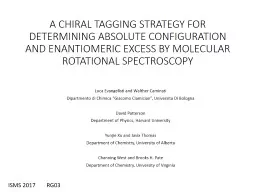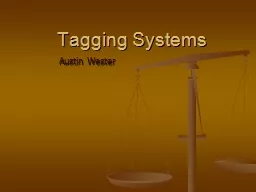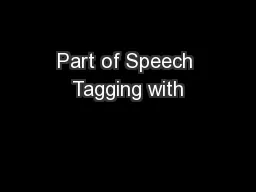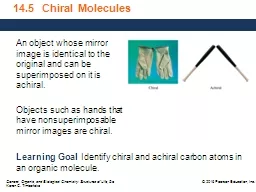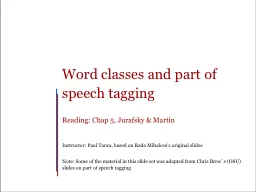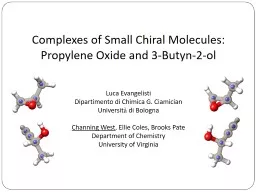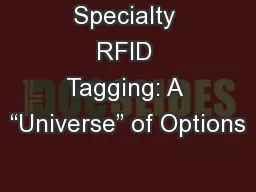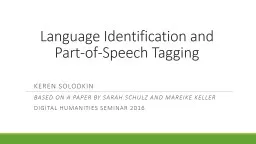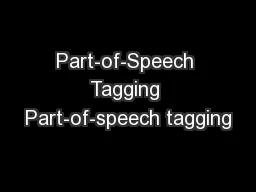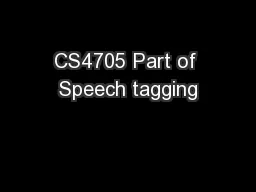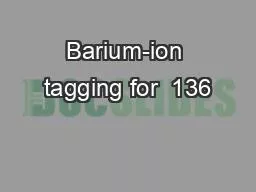PPT-A CHIRAL TAGGING STRATEGY FOR DETERMINING ABSOLUTE CONFIGURATION AND ENANTIOMERIC EXCESS
Author : briana-ranney | Published Date : 2018-01-30
Luca Evangelisti and Walther Caminati Dipartmento di Chimica Giacomo Ciamician Universita Di Bologna David Patterson Department of Physics Harvard University Yunjie
Presentation Embed Code
Download Presentation
Download Presentation The PPT/PDF document "A CHIRAL TAGGING STRATEGY FOR DETERMININ..." is the property of its rightful owner. Permission is granted to download and print the materials on this website for personal, non-commercial use only, and to display it on your personal computer provided you do not modify the materials and that you retain all copyright notices contained in the materials. By downloading content from our website, you accept the terms of this agreement.
A CHIRAL TAGGING STRATEGY FOR DETERMINING ABSOLUTE CONFIGURATION AND ENANTIOMERIC EXCESS: Transcript
Download Rules Of Document
"A CHIRAL TAGGING STRATEGY FOR DETERMINING ABSOLUTE CONFIGURATION AND ENANTIOMERIC EXCESS"The content belongs to its owner. You may download and print it for personal use, without modification, and keep all copyright notices. By downloading, you agree to these terms.
Related Documents

